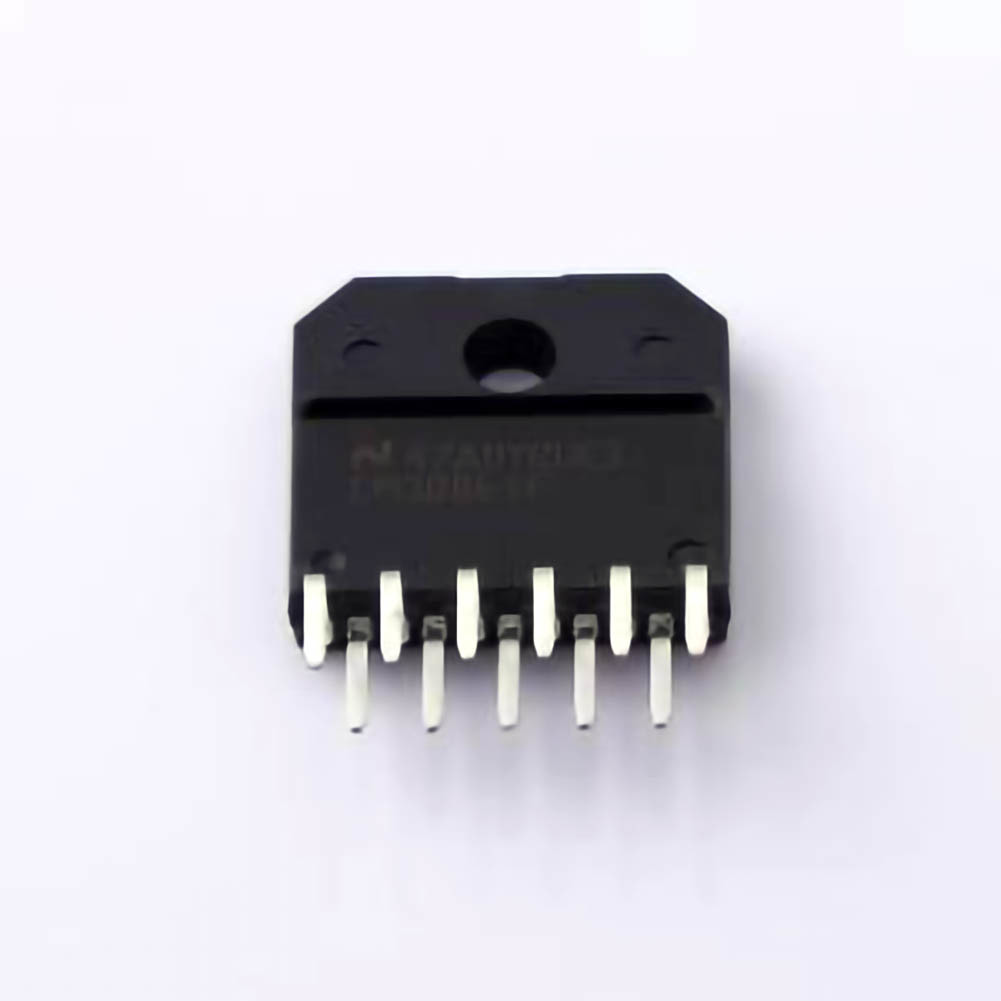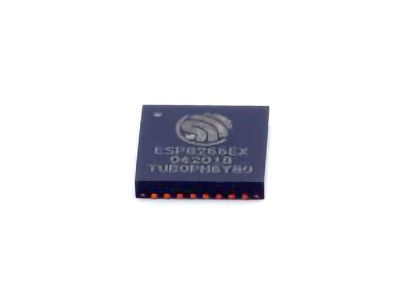
Introduction to LM3886 and Its Role in Sound Systems
In the world of high-fidelity Audio systems, the quality of the amplifier plays a critical role in delivering clean, accurate sound reproduction. For audiophiles and audio engineers alike, the search for an amplifier that offers both Power and clarity has led to the widespread adoption of the LM3886 audio amplifier chip. Manufactured by National S EMI conductor (now part of Texas Instruments), the LM3886 is a high-performance audio power amplifier with exceptional sound quality, making it an ideal choice for home theater systems, audiophile setups, and professional audio equipment.
What is the LM3886?
The LM3886 is a low-distortion, high-output power amplifier designed for audio applications. It can provide up to 68W of continuous output power into an 8-ohm load, making it suitable for a wide range of audio equipment, including home audio systems, professional amplifiers, and even high-power subwoofer drivers. It operates in a class AB configuration, offering a blend of efficiency and high-fidelity sound reproduction.
What sets the LM3886 apart from many other audio amplifiers is its combination of high output power, low total harmonic distortion (THD), and good thermal performance. It is built with protection circuitry that prevents overheating and provides short-circuit protection, making it a reliable choice for both DIY enthusiasts and commercial applications.
Key Features of the LM3886
The LM3886 offers several features that make it stand out in the world of high-fidelity audio:
Low Total Harmonic Distortion (THD): The LM3886 is capable of achieving less than 0.03% THD, ensuring that the sound produced remains as faithful to the original signal as possible.
High Output Power: With a power output of up to 68W RMS into 8 ohms, the LM3886 can drive medium to high-powered speakers with ease, making it versatile for various audio system setups.
Integrated Protection: The LM3886 features thermal and overload protection, which protects both the chip and the audio system from damage caused by overheating or excessive current. This is crucial for the longevity and reliability of the amplifier in demanding situations.
Simplicity and Ease of Use: Despite its high performance, the LM3886 is relatively easy to integrate into a custom amplifier design, making it ideal for DIY audio projects. The chip comes in a standard package with minimal external components required.
Improved Power Efficiency: As a class AB amplifier, the LM3886 strikes a good balance between efficiency and sound quality, ensuring that it delivers high-fidelity audio while consuming reasonable amounts of power.
Versatility: The LM3886 can be used in a wide variety of applications, from home audio systems to professional sound equipment. Whether you need a stereo amplifier or a more complex multi-channel system, the LM3886 can meet the demands of different setups.
Applications of the LM3886
Given its high power output and low distortion characteristics, the LM3886 can be used in several audio system configurations. Some common applications include:
Home Audio Systems: The LM3886 is a popular choice for audiophiles who want to build their own amplifiers. With its robust power output and clean audio reproduction, it can drive high-end speakers and deliver an immersive listening experience.
Home Theater Systems: For home theater enthusiasts, the LM3886 can be integrated into surround sound systems to power front, center, and rear speakers. Its efficiency and sound clarity make it ideal for such applications.
DIY Audio Projects: Audio engineers and hobbyists often choose the LM3886 for custom audio amplifier projects due to its ease of use and availability of reference designs. Whether building a single-channel amplifier or a multi-channel system, the LM3886 can be adapted to suit various needs.
Subwoofer Amplification: The LM3886 is also well-suited for powering subwoofers. With its ability to drive low-frequency drivers with authority and accuracy, it is often used in high-powered subwoofer designs for home theater systems.
Professional Audio Equipment: The LM3886's ability to deliver high output power while maintaining excellent sound fidelity makes it a good choice for professional audio equipment, including PA systems and stage monitors.
Designing a Sound System with the LM3886 Amplifier
Now that we understand the key features and applications of the LM3886, let's explore how to design a high-fidelity audio amplifier system using this versatile chip. Building an amplifier around the LM3886 involves several important considerations, including power supply requirements, PCB layout, heat dissipation, and overall system integration.
1. Power Supply Requirements
One of the most critical aspects of designing an amplifier with the LM3886 is ensuring that the power supply can provide sufficient current and voltage for the amplifier to operate at its full potential. The LM3886 requires a dual-rail power supply, which typically consists of a positive and negative voltage rail, along with a ground reference.
For typical applications, the LM3886 works with power supplies that provide ±35V to ±42V DC, depending on the output power requirements and load impedance. A well-regulated power supply is essential to ensure that the amplifier produces clean, distortion-free audio output. It is important to choose a transformer that can supply enough current at the required voltage levels without excessive voltage sag.
In many high-quality designs, designers use a toroidal transformer for its low electromagnetic interference (EMI) and efficiency. The power supply must also include appropriate filtering capacitor s to smooth out ripple and noise, which can degrade audio performance.
2. Heat Dissipation
The LM3886, like all power amplifiers, generates heat during operation, especially at higher output levels. Without proper heat dissipation, the chip may overheat and trigger its built-in thermal protection, leading to shutdowns or, in extreme cases, permanent damage.
To prevent overheating, the LM3886 should be mounted on an appropriate heatsink. The size and design of the heatsink depend on the power output of the amplifier and the ambient temperature conditions. For optimal thermal management, it is important to ensure good airflow around the amplifier and its heatsink.
In some designs, multiple LM3886 chips may be used in parallel or bridged configurations to increase power output. In such cases, careful consideration of heat management is even more critical to avoid thermal runaway and to maintain the performance and longevity of the amplifier.
3. Circuit Layout and PCB Design
The layout of the circuit board is a key factor in ensuring that the amplifier performs well. Poor PCB layout can lead to various issues, such as oscillations, unwanted noise, and reduced overall efficiency. Designers must take care to separate high-current paths from low-level signal paths to minimize interference and noise coupling.
For optimal performance, signal traces should be kept as short as possible, and proper grounding techniques should be employed. Using a ground plane is highly recommended, as it minimizes ground loop noise and ensures stable operation. Additionally, the placement of bypass Capacitors near the LM3886’s power supply pins is essential to reduce high-frequency noise and ensure stable operation.
4. Capacitor Selection
Capacitors play an important role in the performance of an audio amplifier. The LM3886 amplifier requires a combination of capacitors for various purposes, including power supply filtering, feedback stabilization, and decoupling.
For the power supply, large electrolytic capacitors are typically used to filter DC voltage and smooth out any ripple. These capacitors should have a high capacitance value and low equivalent series resistance (ESR) to handle the high current demands of the amplifier.
For the signal path, high-quality film capacitors are preferred due to their low distortion characteristics. These capacitors are used in the feedback loop to stabilize the gain and ensure that the amplifier provides a flat frequency response.
5. Output Stage Considerations
The output stage of the LM3886 is designed to drive loudspeakers directly. However, depending on the system’s design and the load impedance, some considerations should be made when selecting speakers. The LM3886 can drive loads as low as 4 ohms, but driving 4-ohm speakers at full power may require additional thermal management due to the increased current demand.
It is also important to design the circuit with sufficient output protection to prevent damage to both the amplifier and the speakers in case of short circuits or overloads. The LM3886 includes built-in protection against short circuits, thermal overload, and output transients, but additional external protection devices such as fuses or relay-based output protection circuits can provide added security.
6. Final System Integration
Once the amplifier circuit is designed, tested, and assembled, it is time to integrate the LM3886 amplifier into a complete audio system. This may involve combining it with preamplifiers, digital-to-analog converters (DACs), equalizers, and other components to build a fully functional audio system.
For example, a home theater system might include multiple LM3886 amplifiers to drive different speakers in a surround sound setup. The integration of these amplifiers requires careful attention to speaker impedance matching, signal routing, and power distribution to ensure optimal system performance.
In conclusion, the LM3886 high-fidelity audio amplifier is an excellent choice for anyone looking to build a high-performance audio system, whether for home, professional, or DIY applications. By understanding the chip’s features, power requirements, heat dissipation needs, and design considerations, you can create an audio amplifier that delivers exceptional sound quality and reliability. Whether you're designing a standalone amplifier or integrating it into a larger sound system, the LM3886 offers a perfect balance of power, performance, and ease of use.
Partnering with an electronic components supplier sets your team up for success, ensuring the design, production, and procurement processes are quality and error-free.

